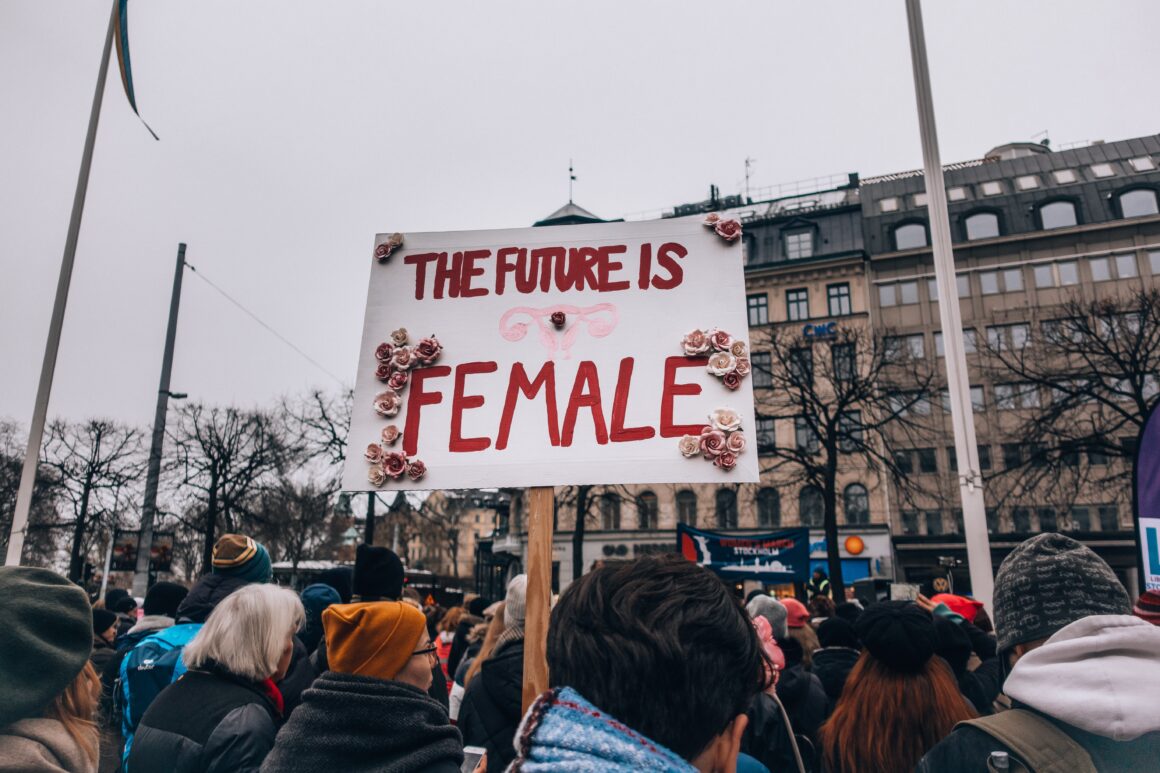It’s almost the end of Women’s History Month, and we indeed deserve a month celebrating the work women from ages ago that have paved the way for us, and the generations to come. From simply wearing bloomers to the #MeToo movement, the feminism comes in many forms. There are many events that have revolutionized women in society, but these events are some that define what feminism is for.

June 4, 1919: Congress passes the 19th Amendment
Exactly 100 years ago, this legislative breakthrough allowed American women to vote and take part in influencing the government. The 19th Amendment was ratified in 1920, meaning that it was officially put into effect a year later it was passed. Gaining women’s suffrage took nearly 71 years of urging the nation to pass the 19th Amendment in different forms such as picketing and lobbying. Susan B. Anthony, Elizabeth Cady Stanton, Lucy Stone, Alice Paul, and many more powerful women successfully led the Women’s Suffrage movement. Every year, we take advantage of this amendment and use it- by simply voting. The modern impact of this act has created an ongoing ripple and applies to every woman in the United States today and forever more.
May 15, 1942: The Women’s Army Corps is founded
Throughout the history of warfare, men have always dominated the battlefield. In the U.S., women were originally prohibited from serving within the ranks of the army besides being a nurse. Although legally women were not allowed to be in uniform, some have bravely fought for their country in secret. The Women’s Army Corp was founded to bring more people to the forces, and allow women to be able to serve the country in noncombat forces. No other woman more than 77 years ago held officer positions and were given as much recognition for their part in their nation’s battles. At first, many Americans were apprehensive of this new concept of women in army positions, but the number of WAC members ballooned to 150,000 and the rest is history. WAC was scrapped in 1973 because the government needed women to assimilate into the forces even more than before. Even though it isn’t around anymore, it has transformed the battle front today. About 18% of the U.S. army are women today, according to the 2016 CNA Summary Report, a dramatic comparison to the fraction of female WAC’s in 1942. In a mere 77 years, female soldiers are now normalized and are fighting just has hard today.
June 10, 1963: The Equal Pay Act is signed by John F. Kennedy
Up until 1963, the difference in wage due to gender was completely legal. The act became one of the first laws fighting against workplace gender discrimination, outlawing a wage gap on the basis of sex. Even though the wage gap still continues to exist today, the government putting in the effort to protect women broke the glass ceiling. In 1963, women made 63 cents to a man’s dollar while in 2017 they make 80 cents for every dollar made by a man. Although we still have a lot of work today, the modern day woman has more financial freedom than any other woman in the past would have made. Through time and work, the act has and will open doors for women to support themselves and others financially.
September 25, 1981: Sandra Day O’Connor becomes the first female justice serving the Supreme Court

O’Connor became a trailblazer for women in government and women in law. She was nominated by Ronald Reagan and ultimately began to be an influential conservative justice. O’Connor has casted the decisive vote in groundbreaking cases such as Roe v. Wade, Mississippi University for Women v. Hogan, Planned Parenthood v. Casey, and many more. Roe v. Wade and Planned Parenthood v. Casey have been monumental for female reproductive rights and the outcomes are relevant today. Today, millions of women have access to safe, legal abortions thanks to O’Connor’s contribution to society. Although she has since retired, she still advocates for educating America’s youth on civics and government.
June 18, 1983: Sally Ride is the first American woman to go to space
At the age of 32, Ride was one of the five astronauts who were a part of NASA’s seventh shuttle mission, STS-7. Not only she broke a record once, but twice- Ride was the first American woman to go to space a second time. She has passed, but her legacy lives on through her lasting impact on young women. Ride has opened the doors for female astronauts, as dozens of women have traveled to space after her monumental record and still are at the present moment.Today, the empowerment of girls in STEM is stronger than ever due to the strong gender disparity in the field. Thanks to trailblazers like Ride, girls are inspired to reach for the stars.
1994: The Violence Against Women Act is passed by Congress
The VAWA was passed under Bill Clinton’s presidency, and is a major milestone for women all across the country. It serves to protect domestic violence victims, as the concept is to activate a better justice system for victims and call attention to them. According to the National Coalition Against Domestic Violence, 1 in 3 women experience some form of physical violence inflicted by their partner. The VAWA is so successful it has been reauthorized in 2000, 2005, and 2013. This act is so important and a necessity because its presence gives a helping to domestic violence victims, who are usually helpless. However, unfortunately, it recently expired in February due to the government shutdown. It is still in the process of being reauthorized, but domestic violence shelters are currently being funded through grants. So many victims depend on the VAWA to protect them, and its delayed reauthorization is doing anything but help for survivors. But it shows that there are still we can do as our role as citizens to expand this list of events.

January 22, 2017: People all around the nation participate in the Women’s March
Hundreds of thousands of people marched to Washington DC in protest of President Trump’s inauguration. Millions of people in the US and around the world also participated in protests held locally in support. Trump is infamous for his treatment of women and is perceived as a threat to women’s civil rights, which fueled those who marched on the mid-winter day. Trump also has threatened to overturn Roe v. Wade and Title X, meaning that a nation where safe and legal abortions are inaccessible is still up in the air. Title X is a federal grant for birth control and other reproductive services targeted towards low-income people. Without Title X and Roe v. Wade, birth control will turn into a luxury item and women will lose the right to choose to have an abortion. This is extremely relevant, because a digression in the progress that we have made today is huge blow to the growth in women’s rights feminism has nurtured so far. This march has grown to be so successful it has become an annual event, and fights to continue the improvement of women’s rights.
2006-2018: Tarana Burke starts the #MeToo movement
Burke started the #MeToo movement by creating an organization dedicated to survivors of sexual assault, long before hashtags were a thing. In 2018, her movement exploded on Twitter, with users using the hashtags #MeToo to share their experiences and encourage others to speak up. Thanks to the movement, many perpetrators paid for their actions. Sexual assault is a topic that has been under the covers for so long, but Burke gave the courage to those who were afraid to speak up. By making people responsible for unacceptable actions they have committed, justice is served for the victims who have been afraid for so long. This paves the way for the future, by implementing the expectation that harasser should be held accountable through solidarity and that victims should be heard.
Without the people who contributed to these historic events, we would not be the place we are at today. All of the events are relevant today and impacts each one of us, and continues to do so. Although March is dedicated to emphasizing women’s history, it should be celebrated all year round.
Photo: John Olson/The LIFE Picture Collection


